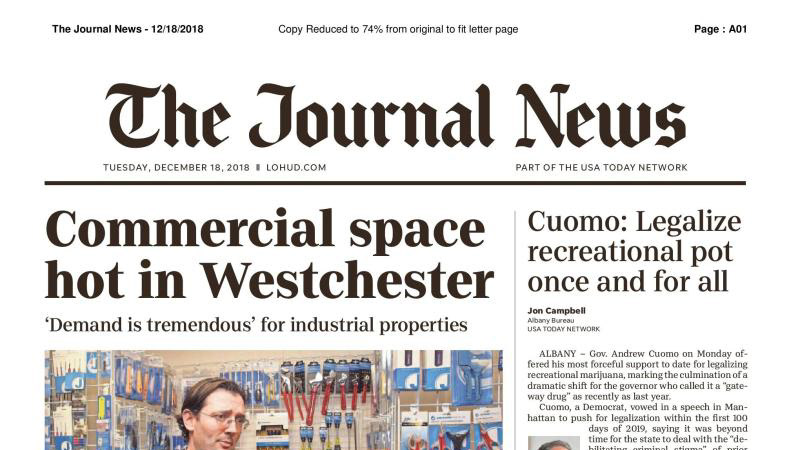MEDIA WRITING: Opinion Piece
SCOTUS eradicated race-based thinking and achieves equality in higher education
october 2023
The Supreme Court’s decision to overturn affirmative action has enhanced America’s merit-based education system while spurring more innovative ways to refine diversity in higher education.
“Diverse environments are the most powerful learning environments,” said Menah Pratt, vice president for diversity and strategic affairs at Virginia Tech. “Our commitment to an inclusive university community prepares our graduates to engage with the world and its most pressing problems.”
In any environment, diversity is crucial because it gives exposure to new points of view, culture, and language while enriching the ability to problem solve and think critically. Most importantly, diversity is an essential factor in school institutions because the notion eradicates previously held stereotypes and increases the sense of belonging amongst minority students.
On June 29, 2023, the Supreme Court ruled in a 6-3 decision in Students for Fair Admissions v. Harvard and Students for Fair Admissions v. University of North Carolina that race-conscious preferences in admission policies are discriminatory and violate the Constitution’s equal protection clause. The decision left people wondering how universities will achieve diversity on their campuses and maintain support for disadvantaged students seeking admission into prestigious institutions. The question is valid. However, affirmative action provides a benefit to certain applicants while failing to acknowledge how this hurts other groups of disadvantaged individuals applying to colleges.
Affirmative action lacked a logical endpoint because it measured success on whether the next incoming class would reach a college’s admission goal of racial composition. The race-based policies that college admissions pursued are unconstitutional and overcompensated for historical systemic discrimination by enforcing present-day systemic discrimination. Racial balancing is inherently inequitable and deemed inconsistent with the principles of fairness and equality.
According to a 2023 Pew Research poll of American adults, 82% of respondents who have heard of affirmative action say college admissions should not consider race. Another poll in this study shows that “Asian Americans are especially likely to say that when colleges consider race in admissions, it negatively affects fairness and student quality.” This information aligns with the court ruling because Students for Fair Admissions successfully demonstrated that college admissions pit Asian Americans against Black and Brown students.
“I remember sitting down at my senior picnic after I got accepted into Virginia Tech’s College of Engineering,” said Leana Sofroni, a Latina formerly majoring in mechanical engineering. “I was shocked when I overheard a group of Asian girls that were whispering about me and said I only got into Tech because I was Hispanic. They seemed jealous because they didn’t get into this school and mentioned that their grades are better than mine.”
The overarching issue of affirmative action is that it preserves racism by reproducing forms of prejudice by individuals who feel they met a school’s admissions criteria but didn’t get in. The problem is damaging to minorities and ultimately creates an awkward stigma among young adults, increasing their biases towards each other due to preconceived notions. Instead of dividing races, educational institutions must create innovative programs, provide resources and adjust admissions procedures in an effort to give equal opportunity to any student seeking higher education.
According to the Supreme Court’s majority opinion, Chief Justice John Roberts stated that college admissions offices can review race solely if the applicant explains how their skin color affected their life experience through discrimination or social influence. Rather than merely basing preferences on an applicant’s race, this new development in undergraduate admissions allows students to illustrate to advisors in their essays that they can contribute to the university because of their heritage or cultural background.
An individual might argue that the Supreme Court’s ruling takes a step away from leveling an uneven playing field and four decades of legal precedent. Although the core of this claim is valid, it suffers from a flaw in its reasoning because the ruling has caused a cascade of positive changes among institutions and their policies regarding race-conscious admissions. The modifications that have taken place indisputably open innovative academic opportunities for disadvantaged students.
Virginia Tech is one of the universities that acknowledges the changes needed within their institution and has already implemented programs that will enrich high school students' learning experiences, positively impacting their college preparation. Starting in the summer, the Black College Institute and Hispanic College Institute will host a week-long program that immerses underrepresented and first-generation students in the college campus environment. Throughout the week, cultural projects will be conducted, Black and Hispanic professionals will visit to share their stories and students will experience living in dorms and eating at dining halls. The programs require an application process but will be free of charge.
Another step that Virginia Tech has taken to achieve equality for disadvantaged students is prioritizing low-income applicants by eliminating the early decision deadline as a part of the Coalition and Common Application submission. Although there is still a non-binding early action process, the removal of early decision benefits students because it previously gave implicit partiality to those who can bear the expense of committing to a college, unlike students who must wait for their financial aid package.
Virginia Tech is the second public institution in the United States to discontinue the practice of legacy admissions to comply with the Supreme Court’s ruling. This unfair tradition on applications is controversial and an example of systemic inequity because it is prejudicial in nature, disproportionately benefitting wealthy, white individuals. The school also removed the requirement of standardized testing, giving students who cannot afford to pay for tutors and testing for the ACT and SAT an advantage in the college application process. Additionally, Virginia Tech created a fee waiver form that allows students who qualify for financial aid to apply to school for free. This new initiative attracts socioeconomically disadvantaged students while upholding the institution’s motto Ut Prosim, “that I may serve.”
The next focus for sustaining diversity must be implemented by lowering barriers to welcome greater numbers of underrepresented minorities and economically disadvantaged students to higher education communities. Complying with the Supreme Court’s ruling does not mean the end of diversity. I believe institutions will thrive under these circumstances as they accept students on a merit-based education system. Admissions offices are now viewing people of color applicants as potential contributors to the university because of how their race has affected their life experiences, instead of as a quota. The reform in institutions throughout the U.S. provides the most equitable form of admissions, giving a more holistic review process of students’ applications, aiding in removing financial obstacles and providing new educational opportunities to rising undergraduate students.








